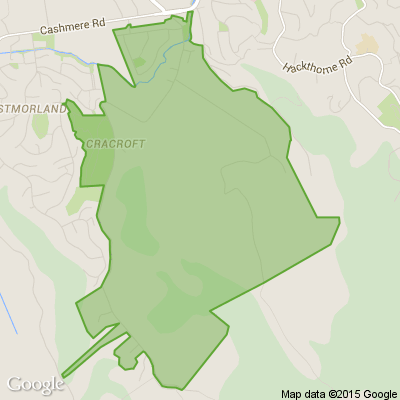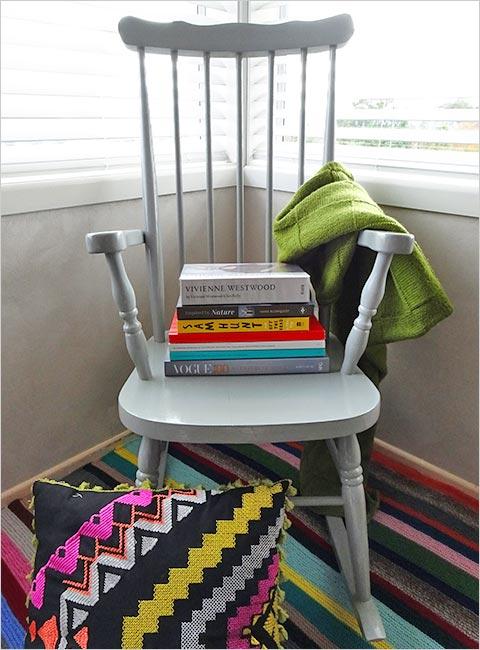
Know what’s happening
Access the private noticeboard for verified neighbours near you. Keep informed about any suspicious activity, send urgent updates to your neighbours when required and discuss emergency planning.
Get to know your neighbours
Browse the directory and start getting to know your neighbours. Don’t want to post to the whole neighbourhood? Send a private message.
Buy, sell and give away
Want to declutter your garage? Buy some used household items? Give away some garden stuff? Become a verified neighbour to browse and post items for sale. Trading is simple when everyone lives nearby.



Thank you for using Neighbourly
You may receive an email confirmation for any offer you selected. The associated companies will contact you directly to activate your requests.
Mike from Hoon Hay
We have the best team of cleaners🤗🧹 in Christchurch, to help you keep your environment clean🧼 and sanitized!🦠🚫 Call us! 0223937075 Morena Cleaning
Negotiable

Mei Leng Wong Reporter from NZ Gardener & Get Growing
Dear neighbours,
Every month, NZ Gardener runs a series of tested reader recipes using a seasonal crop. We are now on the hunt for walnut recipes, so send your best ones to mailbox@nzgardener.co.nz before March 28, 2022.
Every published recipe wins a copy of our special edition Homegrown Recipes.

The Team from Addictive Eaters Anonymous - Christchurch
I love our way of life
I started dieting when I was 12 years old. I wasn’t overweight but I felt pudgy and I wanted a new boy at school to like me. Somehow, I obtained a calorie counting book and quickly memorized it. Each day, I tried hard to reach my goal of eating a certain number of … View moreI love our way of life
I started dieting when I was 12 years old. I wasn’t overweight but I felt pudgy and I wanted a new boy at school to like me. Somehow, I obtained a calorie counting book and quickly memorized it. Each day, I tried hard to reach my goal of eating a certain number of calories. It was well below what I needed to eat as a growing child, but I didn’t see it that way at the time. I just wanted to get rid of my squishy stomach and eat a little less.

Murray from Halswell
CLEAN SOLID WOODEN / PLY PACKING CRATES $5.00 Each Cheap.!!
Hi All
We still have Boxes Available
We end up with surplus Wooded Crates & we sell them off for the Work Social Club.
… View moreCLEAN SOLID WOODEN / PLY PACKING CRATES $5.00 Each Cheap.!!
Hi All
We still have Boxes Available
We end up with surplus Wooded Crates & we sell them off for the Work Social Club.
They are Clean / Strong Wooden / Ply with metal corners for strength
Come with lids.
3 Main Sizes
1000mm x 800mm x 900mm
or
1200mm x 800mm x 900mm
or
1000 mm x 800mm x 600 mm
can be used for all sorts of things.
General Storage / Fire Wood storage / Made into Pet Houses - etc etc
Collection or Viewing welcome in Hornby area Christchurch.
Location is SPAREX /AGCO Ltd
65 FOREMANS ROAD.
( we located down a lane way - turn at the Large TIL FREIGHT sign on
Foremans Road & go to end of lane towards Railway line we are the Yard
of Tractors.) Picture attached of sign to turn at.
Please Phone / Txt 0275417518 - Murray.
These can be collected between 8am to 5pm.
Thanks :-)
Price: $5.00
Price: $5
Price: $5
The Team from Resene ColorShop Hornby
Refresh and restore a beautiful old rocking chair with a simple but stylish new look with Resene Enamacryl.
Find out how to create your own.

In 1999, World Poetry Day was introduced, with the aim of promoting the reading, writing, publishing, and teaching of poetry around the world.
It is an opportunity to appreciate the power of poetry and how it can capture the creative spirit of the human mind.

Since 1999, our residents and team members have raised more than $5 million for charities across New Zealand and Australia.
Supporting fellow pioneers isn’t new. It’s in our DNA. Learn more about becoming our charity partner for 2022/23.
Apply now.
Find out more

Mike from Hoon Hay
Are you come home tired 🥴, and you have to clean🧼? We are thinking of your comfort that is why we have a promotion 😁, for a house with up to 4 bedroom, a standard cleaning of two hours for 70 dollars!
What can be included:
Dusting
Vacuuming
mop
Kitchen
Bathrooms
Tidy
cleaned … View moreAre you come home tired 🥴, and you have to clean🧼? We are thinking of your comfort that is why we have a promotion 😁, for a house with up to 4 bedroom, a standard cleaning of two hours for 70 dollars!
What can be included:
Dusting
Vacuuming
mop
Kitchen
Bathrooms
Tidy
cleaned surfaces
pantry cleaning
Make the bed
microwave cleaning
Toaster Cleaning
Change of sheets
Depending on what you need in your house is the time it will take so...
As we understand that the first cleaning always takes longer, we offer you a 20% discount on the first cleaning to show you our best work😊.
Morena Cleaning!
Price: $35
Patricia from Spreydon
Ideal for travelling to keep food or drinks cold or warm. 12v DC, min temp 5degC, maximum temp 65degC . Capacity 6 litres. 10amps, 273mm (H) 310 (W) 177 (D). As new, never used. Contact Pat 03)3370079 mob: 022 305 4030 (texts only) email: pat@slingshot.co.nz
Price: $40
Patricia from Spreydon
Trees, lacebarks, lancewood, grisilinia (broadleaf), hebes Contact Pat 337 0079 mob: 022 305 4030 (texts only)
Price: $4

Patricia from Spreydon
Set of two Nikon extension rings PK 12 14 & PK 13 27.5 good condition In case (with some wear)
Contact Pat tel: 337 0079 mob: 022 305 4030 (texts) email: pat@slingshot.co.nz
Price: $240
The Team from NZ Compare
Today is a perfect time to stop and enjoy the company of your neighbours, friends and family!
The team at NZ Compare wish you all good health, good luck and happiness for 2022.

Alan from Beckenham
Calling all former Temuka residents!
There is to be a get together on Sunday 24th April 2022 at the Cashmere Club, Hunter Terrace, Beckenham at 2pm.
The function will be self funding with drinks and bar snacks available.
Interest has been shown by quite a number of folk currently living … View moreCalling all former Temuka residents!
There is to be a get together on Sunday 24th April 2022 at the Cashmere Club, Hunter Terrace, Beckenham at 2pm.
The function will be self funding with drinks and bar snacks available.
Interest has been shown by quite a number of folk currently living in or near Christchurch so feel free to join in and catch up with some old friends or make some new ones!
The function is defiantly on and will go ahead regardless of numbers so don’t be shy as we look forward to seeing as many people as possible to ensure a memorable event! Please pass this on to any other Temuka folk.
Sunday 24th April, Cashmere Cub, Beckenham. “Come on the white!”

A toy bunny lost and then left on top of a skip after the anti-mandate occupation at Parliament has been reunited with its owner, thanks to social media.
Richard Falkner, who works in central Wellington, found the soiled Peter Rabbit toy on top of a water tank used as a makeshift bin at Aitken St … View moreA toy bunny lost and then left on top of a skip after the anti-mandate occupation at Parliament has been reunited with its owner, thanks to social media.
Richard Falkner, who works in central Wellington, found the soiled Peter Rabbit toy on top of a water tank used as a makeshift bin at Aitken St last week, before taking it home and giving it a clean. Read more here.
We live in unusual times. It all gets a bit much some days. So each weekday we're bringing you a much-needed dose of positivity to remind you that there's inspiration, kindness and quirkiness out there too. Sign up here to get The Antidote delivered direct to your inbox.

17 March is Saint Patrick’s Day. It is the day when Irish communities around the world celebrate their culture with music, dancing, parades, and traditional food and drinks.
May the luck of the Irish be with you! Enjoy your day!

 Loading…
Loading…
Are you sure? Deleting this message permanently removes it from the Neighbourly website.
 Loading…
Loading…

 Price Upon Application
Price Upon Application



 Marketed by Karen Ellis
Marketed by Karen Ellis

 Price Upon Application
Price Upon Application



 Marketed by Karen Ellis
Marketed by Karen Ellis

 Price Upon Application
Price Upon Application



 Marketed by Karen Ellis
Marketed by Karen Ellis

 Price Upon Application
Price Upon Application



 Marketed by Karen Ellis
Marketed by Karen Ellis
© Neighbourly 2025
